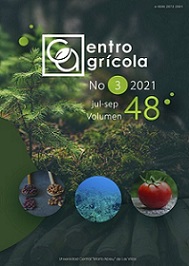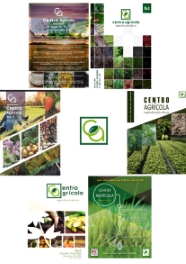CE: 10415 CF: cag061172110
RESEARCH ARTICLE
Quantitative variables associated to the resistance to sugarcane brown rust disease
Variables cuantitativas asociadas a la resistencia de la enfermedad roya parda de la caña de azúcar
Joaquin Montalvan Delgado; Isabel Alfonso Terry; Eida Rodríguez Lema; Ivia Pouza Sierra; Félix Valladares Arrocha; Isabel Torres Varela y Yoslen Fernández Galvez
Instituto de Investigaciones de la Caña de Azúcar. Carretera al CAI Martínez Prieto Km 1½, Boyeros, La Habana, Cuba. CP 19390.
E-mail: This email address is being protected from spambots. You need JavaScript enabled to view it.
ABSTRACT
With the purpose to analyze the behavior of a group of sugarcane cultivars in the presence of brown rust (Puccinia melanocephala Sydow and P. Sydow) in the area of the Territorial Sugarcane Research Station Oriental Center Camagüey, it was carried out an experiment with 11 sugarcane cultivars (C1051-73, C132-81, C266-70, C323-68, C86-12, C86-503, C86- 56, C88-380, C90-530, Co997, SP70-1284) and six patterns of well-known reaction PR980 (I grade), Ja64-11 (II grade), C334-64 (III grade), My5514 y Ja60-5 (IV grade) y B4362 (V grade). The evaluations were made at the plant and ratoon shoot at the ages of three, four, five, six and nine months in the leaves +1, +3 y +5. The evaluated parameters were: length and the number of pustules, size of the biggest pustule, and the occupied area by pustules. It was made an analysis of variance and Tukey’s test to find the differences between the cultivars. The statistical packet SPSS such as the main additive and multiplicative interactions (AMMI Models) were used. There are differences in every analyzed factors (cultivar, leaf and evaluation moment) and in the analyzed variables (TPM and occupied area by pustule). The resistance patterns kept the expected behavior and the biggest cultivars percentage behaved like resistant.




